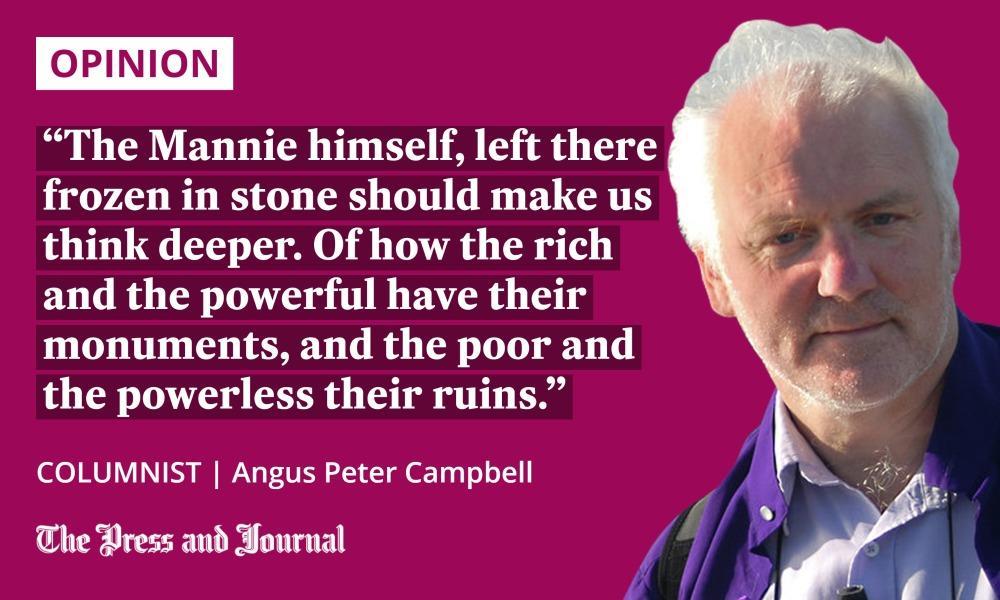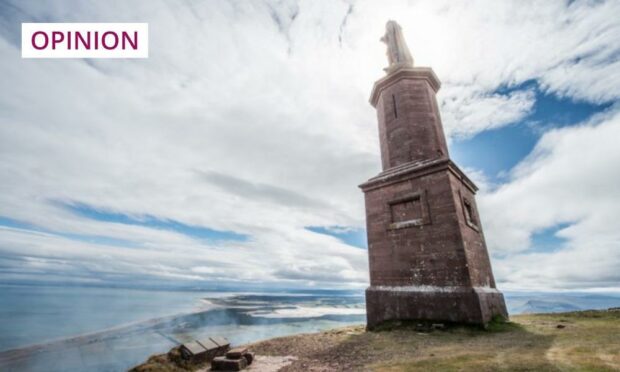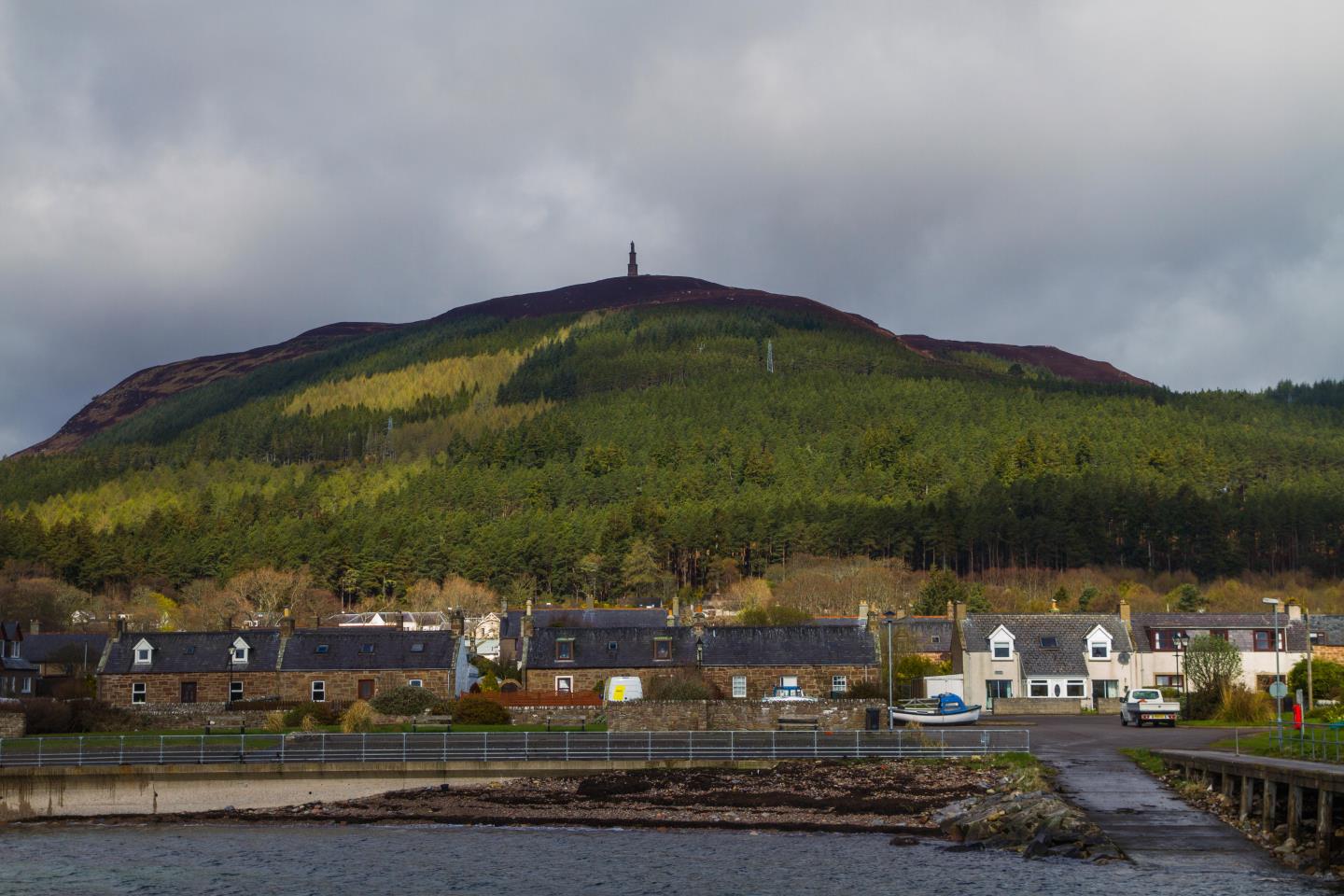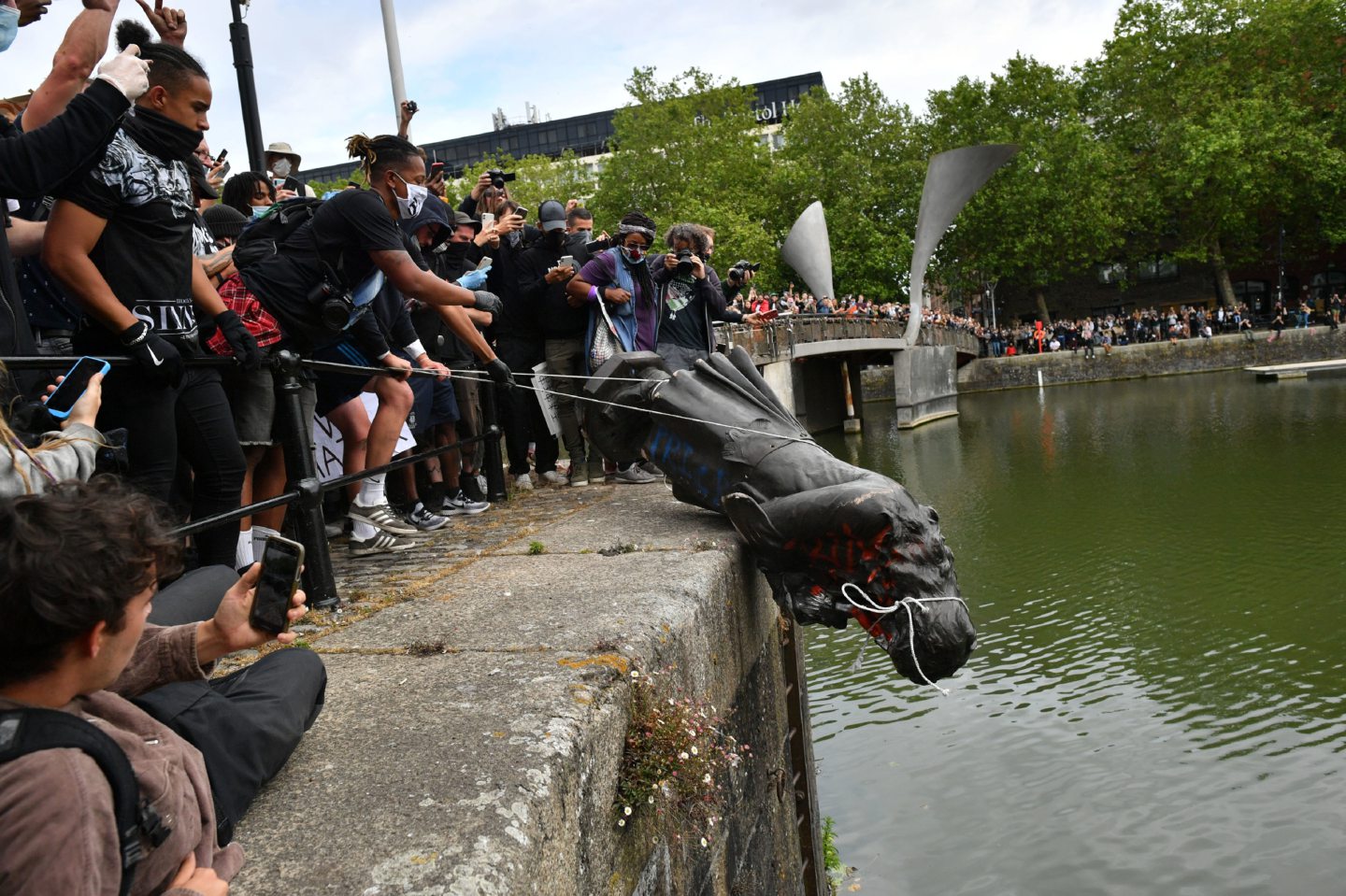While it seems that half of the world’s statues have been toppled off their perches, The Mannie still stands there high on Beinn a’ Bhragaidh above the village of Golspie.
The Mannie, of course, is George Leveson-Gower, otherwise known as the Marquess of Stafford and the first Duke of Sutherland, who oversaw the brutal clearance of thousands of people from his Highland estates in the early half of the 19th century.
And a good thing too that he still stands there, I say, as a daily and highly visible reminder that history shouldn’t be swept under the heather. There he is in all his shame.

“History is written by the victors” is no idle phrase. Visible in stone all over the world, while the hidden and distorted and vanquished history of the poor and the disenfranchised and the defeated has been largely ignored.
Though not totally. It survives in the “leid o’ the folk” as Grassic Gibbon so beautifully put it. In song and stories, in memory and tradition, in the un-statued corners where, up until now, only folklorists and dedicated local historians have delved.
I understand the desire to knock the Duke off his pedestal
Take the Mannie himself, for example. Though he stands there in stone, indigenous Gàidhlig poetry toppled him long ago along with all the other perpetrators of the Clearances. Not least in the song-poetry of the great Skye bàrd and harpist, An Clàrsair Dall (The Blind Harpist), Roderick Morison, who foresaw it all through the anglicisation of the chief of Clan MacLeod a century or so before the actual Clearances.
Granted, the clan chiefs largely responsible were not often blamed directly for the brutal evictions, and the vitriol was addressed to their factors and agents (such as the infamous Patrick Sellar) and to the innocent sheep which had replaced the people. But, despite that, it was clear that ultimate responsibility, as now, always lay at the top.
The most famous articulation of the people’s anger is found in the great Sutherland song, Mo Mhallachd aig na Caoraich Mhòr (My Curses on the Big Sheep), composed by Ewan Roberston from Tongue in the 1880s, around 60 years after the notorious Clearances of 1815-19.
Though the title’s curse is directed at the poor sheep, the real culprits are searingly named in the fifth, sixth and seventh verses of the song: The Duchess of Sutherland, Sellar, and the First Duke of Sutherland (The Mannie).
These three verses read:
“Bhain-Diùc Chataibh, bheil thu ‘d shìth?
Càit bheil nis do ghùntan sìod’?
Do chùn iad thu bhon fhoil ‘s bhon fhrìd
Tha ‘g itheamh measg nan clàraibh?
Shellair bhioraich tha san ùir,
Ma fhuair thu ’n gràs ris ’n robh do dhùil,
’N teine leis do chuir thu ’n tuath fo ruaig
Tha fuaim aig nis ri d’ fheusaig.
Ceud Diùc Cataibh le chuid foill,
’S le chuid càirdeas do na Goill,
Gum b’ ann an Iutharn ’n robh do shàil,
’S gum b’fheàrr leam Iùdas làmh rium.”
And, in translation:
“Duchess of Sutherland, are you at peace?
Where now are your silken gowns?
Have they protected you from the decay
That consumes you between the boards?
Wicked Sellar that’s in the earth
If you received the grace you expected
In the fire through which you cleared the tenants
It now bristles your beard.
Tha First Duke of Sutherland
With all his friendship to the non-Gaels
May it be that your feet are in Hell
And I’d prefer Judas next to me.”
So, I understand the desire to knock the Duke physically off his pedestal: a dismemberment which happened emotionally and culturally a long time ago.
A lasting reminder of how history is so partial and skewed
Some of the people who have talked about and planned blowing up the Mannie’s statue are friends of mine. I’m personally against it for two reasons. First, my aversion to any form of violence whatsoever, even to (or maybe especially to) a stone sculpture.
I don’t believe that any violence, such as taking a hammer or dynamite to a statue, does any good. Force only breeds force. But, more importantly, I want him to remain there high on the hill as a visible reminder of injustice.
I know you can also do that in alternative ways, through statues of the poor and educational reminders, but the Mannie himself, left there frozen in stone should make us think deeper. Of how history is so partial and skewed. Of how the rich and the powerful have their monuments, and the poor and the powerless their ruins.
And to remind us that he gazes unseeing down on a country where iniquitous land ownership, overpriced housing and rentals, loss of the indigenous young, and the decline of the parish’s native Gàidhlig continue, unabated.
The Mannie is not personally responsible for that, though the power, the class, the system and the exceptionalism he stands for, is.
Angus Peter Campbell is an award-winning writer and actor from Uist









Conversation